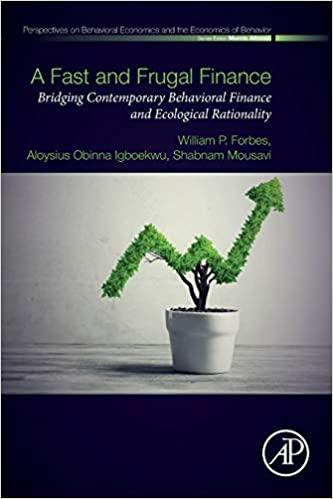

1. (Points: 5) Use data from St. Louis Federal Reserve FRED database to plot historical trends (1970 onwards or from the earliest available date if later than 1970, to the most recent date available; e.g. you should plot the federal funds rate from 1970 to December 2020) for the following: a. M1 money supply b. Federal funds rate c. Discount Rate d. Interest Rate on Reserves e. Money Multiplier 2. (Points 35) For each of the above charts, pick two time periods where you noticed unusually high or low values of the variable. Comment on why you think those might have occurred (separate explanation for each data point you choose) using the tools you have learnt in this course as well as your knowledge of the economic conditions of that period. 3. (Points: 15) How do the values of each variable move in relation to the others? State what you observe above their movements vis--vis each other (e.g. does the money multiplier move in the same direction as the Money supply? Are there periods of time when they do not follow the regular trend?). Use the tools you have learnt to analyze the reasons behind the relationships you observe in the charts (e.g. you can use the market for reserves to analyze how the federal funds rate moves as compared to the other variables). 4. (Points: 10) What is the current federal funds target/range and how does it compare to the effective federal funds rate? When was the last time the Fed missed its target or was outside the target range? By how much did it miss? 5. (Points: 10) What are the key trends that you observe in 2020. Explain how the pandemic has affected each variable and why? 6. (Points: 10) Go to the St. Louis Federal Reserve FRED Database and find the most recent data available on currency (CURRNS), Total Checkable Deposits, Total Reserves (RESBALNS) and Required Reserves (RESBALREQ). Calculate the value of the currency deposit ratio and the excess reserve ratio. Using rr = 10%, compute the value of the money multiplier. How does it compare to the value in the chart in part 1? 7. (Points: 15) The money multiplier declined significantly during the period 1930 33 and also during the recent financial crisis of 2008-10. Yet the M1 money supply decreased by 25% in the depression period but increased by more than 20% during the recent financial crisis. What explains the difference in outcomes? Explain in detail. 1. (Points: 5) Use data from St. Louis Federal Reserve FRED database to plot historical trends (1970 onwards or from the earliest available date if later than 1970, to the most recent date available; e.g. you should plot the federal funds rate from 1970 to December 2020) for the following: a. M1 money supply b. Federal funds rate c. Discount Rate d. Interest Rate on Reserves e. Money Multiplier 2. (Points 35) For each of the above charts, pick two time periods where you noticed unusually high or low values of the variable. Comment on why you think those might have occurred (separate explanation for each data point you choose) using the tools you have learnt in this course as well as your knowledge of the economic conditions of that period. 3. (Points: 15) How do the values of each variable move in relation to the others? State what you observe above their movements vis--vis each other (e.g. does the money multiplier move in the same direction as the Money supply? Are there periods of time when they do not follow the regular trend?). Use the tools you have learnt to analyze the reasons behind the relationships you observe in the charts (e.g. you can use the market for reserves to analyze how the federal funds rate moves as compared to the other variables). 4. (Points: 10) What is the current federal funds target/range and how does it compare to the effective federal funds rate? When was the last time the Fed missed its target or was outside the target range? By how much did it miss? 5. (Points: 10) What are the key trends that you observe in 2020. Explain how the pandemic has affected each variable and why? 6. (Points: 10) Go to the St. Louis Federal Reserve FRED Database and find the most recent data available on currency (CURRNS), Total Checkable Deposits, Total Reserves (RESBALNS) and Required Reserves (RESBALREQ). Calculate the value of the currency deposit ratio and the excess reserve ratio. Using rr = 10%, compute the value of the money multiplier. How does it compare to the value in the chart in part 1? 7. (Points: 15) The money multiplier declined significantly during the period 1930 33 and also during the recent financial crisis of 2008-10. Yet the M1 money supply decreased by 25% in the depression period but increased by more than 20% during the recent financial crisis. What explains the difference in outcomes? Explain in detail








